In a bustling summer transfer market, there is a new target for some top European clubs in the form of Adama Bojang. The 19-year-old Gambian started to draw attention in the U20 African Cup of Nations and, more recently, in the U20 World Cup. In both of those competitions together, he scored six goals.
As a matter of fact, he was a decisive factor in two extraordinary Gambia campaigns, where initially they reached the final in the U20 AFCON and then achieved a fantastic first place in the U20 World Cup group stage.
Currently performing with Steve Biko FC, a first-tier side in Gambia, it is more than likely that a summer move will be made. As we mentioned, top European clubs have been tracking this young prospect. However, the Premier League sides are the ones who seem to be more concrete in such an approach, especially Manchester United. Some financial concerns aligned with some attacking departures can contribute to making Adama a first-team squad option for Erik ten Hag‘s side.
Regardless of which club he ultimately moves to, it will be interesting to see how he will adapt to such a different environment in a wholly distinct and challenging league. At such young age and with relatively good tactical knowledge, we believe he has the ability to make quite a fast and good adaptation wherever his next destination may be.
In this tactical analysis in the form of a scout report, we’ll try to unveil Adama’s primary attributes and provide a tactical disclosure on his game both in and out of possession.
Adama Bojang’s inner attributes
Due to the limited availability of footage from Gambia’s top tier, we will base our analysis on Bojang’s performances with the Gambia U20 national team and his role within their typical strategy and tactics. They usually play in a 4-2-3-1, where Adama is the most advanced element, though, as we’re going to see further, his field of action can be expanded to the flanks.
He’s a player who can be characterised by his distinct pace and agility, taking into consideration his height (1.91 m). In fact, it’s hard to find players like Bojang who are so coordinated with such stature. In addition to his height, Adama also has excellent anticipation and jumping height, which significantly improves his aerial game, especially inside the box.
Yet, Adama shows some room for growth in the technical department, especially in terms of his dribble and passing. For instance, he shows some difficulty in bypassing defenders in the 1v1 and in succeeding in short-space situations. These can be explained by the fact that Bojang isn’t a short dribble player, but an element that stands out due to some great physical and mental qualities.
Furthermore, he also displays some issues in using his weaker foot (left) during most of his actions. We think that his performance would be significantly boosted if he used his left foot more regularly, especially in training sessions and with some individual focus. Such a conclusion is taken from our analysis, where he already showed his weaker foot quality. In the sequence of images below, we can see an example of what Bojang’s left foot is capable of doing.
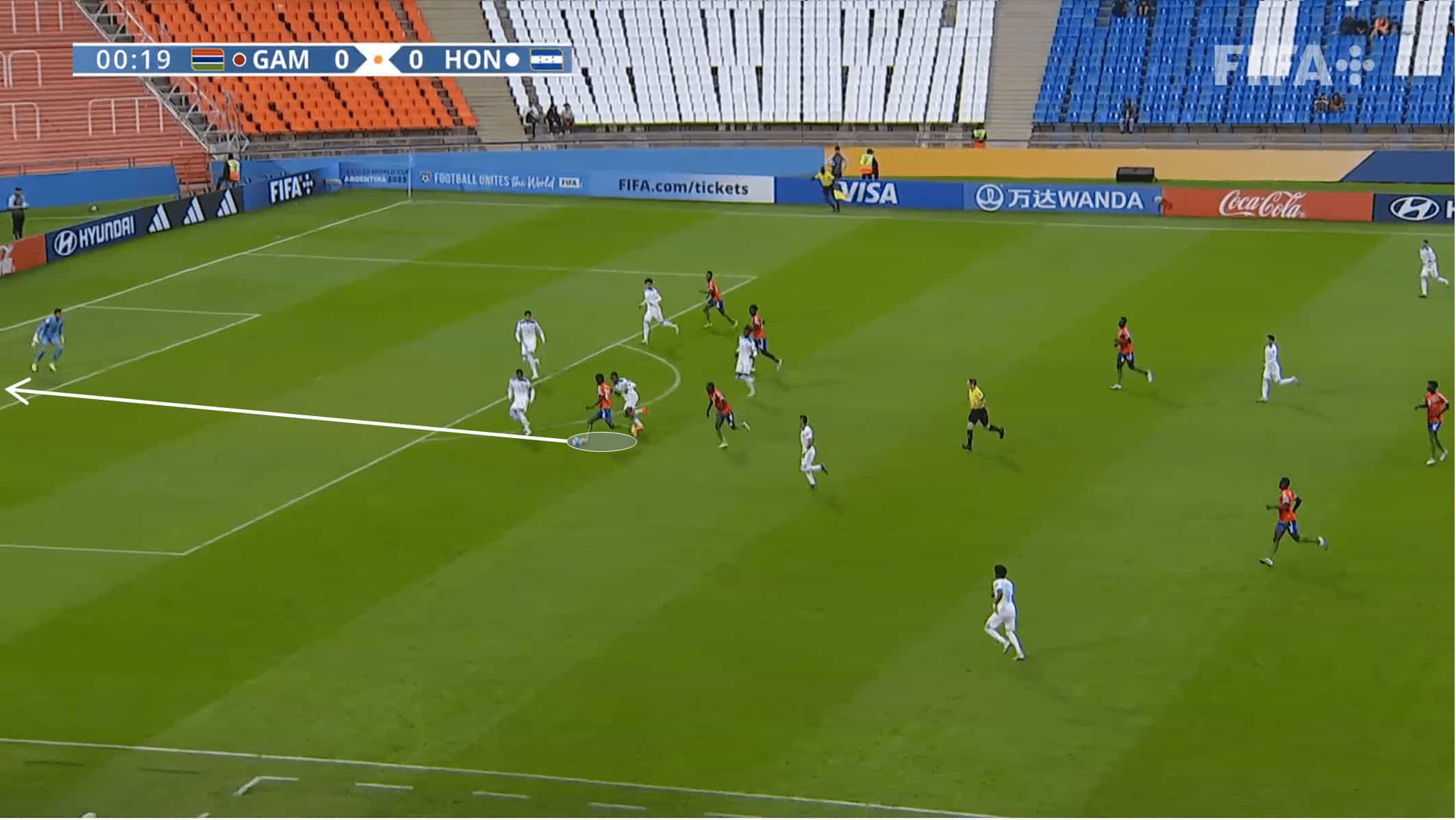
After beating a defender, Bojang set up a shooting opportunity he fancied just on the edge of the penalty box.
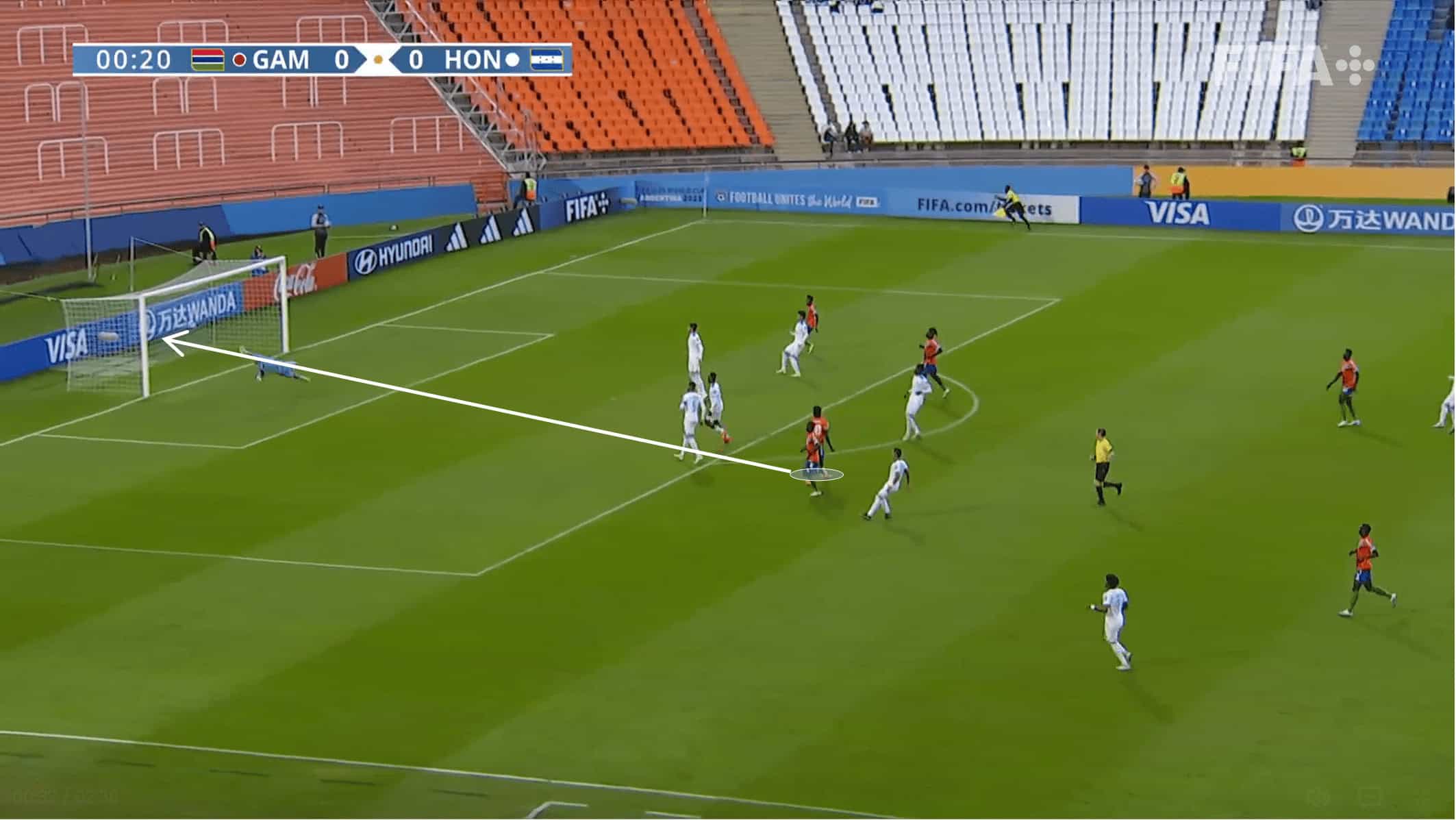
Then, he went for it and blasted a powerful strike that gave the ‘keeper little chance.
However, as we see it, Adama needs to improve his strength in order to properly dispute duels during the game, particularly if he plays in a much more physical league like the Premier League. As a matter of fact, according to Wyscout, during the U20 African Cup of Nations, Bojang only won approximately 30% of his duels.
Persistency and intensity are two words that can define Bojang. Moreover, his positioning is one of his most attractive traits, and this can be a crucial and decisive factor for a club considering making a summer move for him.
Positioning as an offensive weapon
Lets’s now take a deeper look at what exactly we mean by our praise of his positioning. During the build-up, he likes to stand deep on the field, right on the opposition’s backline. Then he decides between one of the two options (attack the depth if he identifies free space behind the backline or drop to explore the distance between the lines).
As a matter of fact, it is when the ball is uncovered that Adama most likely attacks the space behind the opposition’s defensive line. However, he has sufficient tactical knowledge to understand whether or not it is worth exploring that particular space.
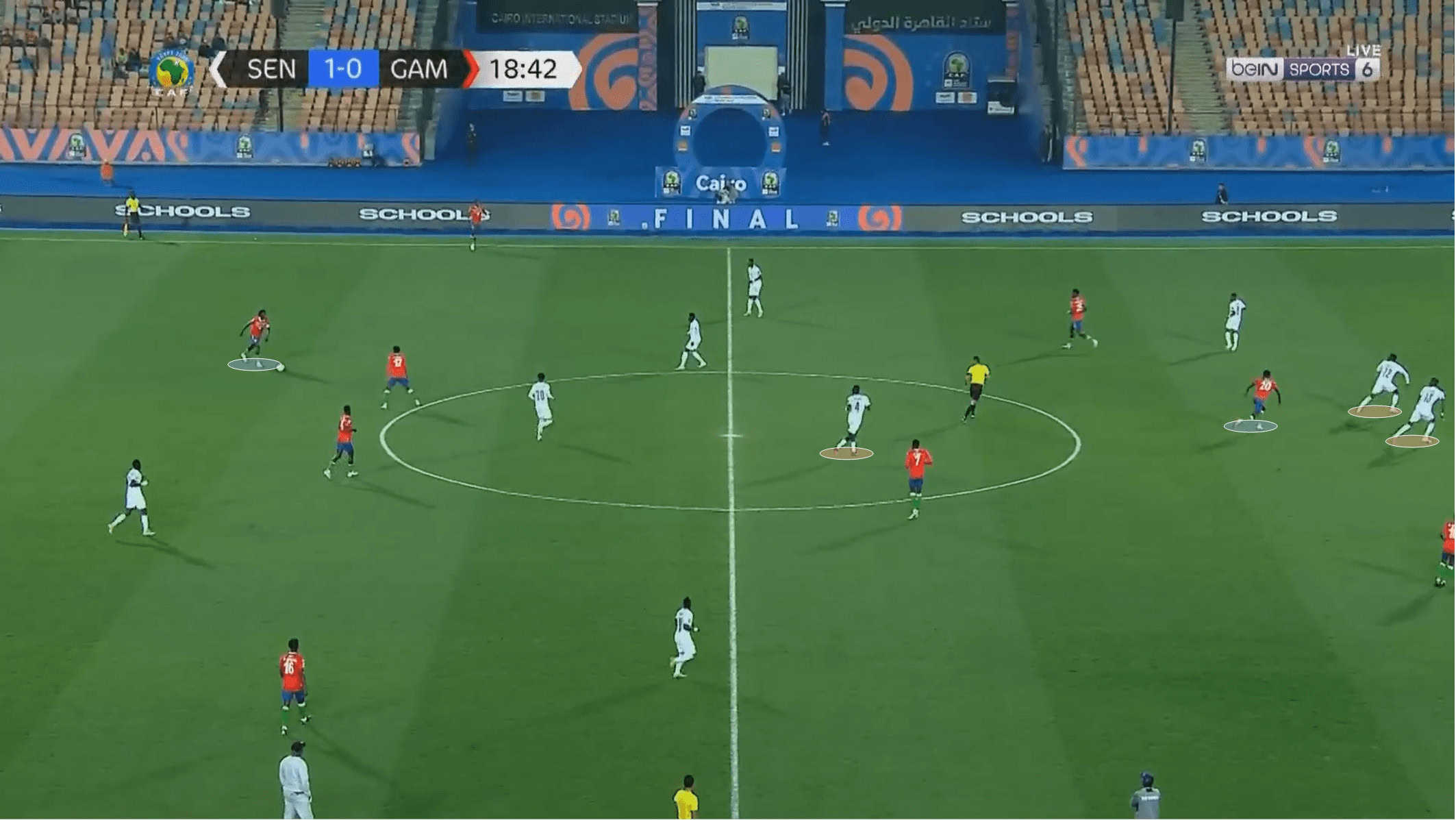
For example, in the image above, we have a situation where the defenders try to anticipate Bojang’s depth move as the attacker begins making his run, seemingly targeting space behind the backline. The defenders start to run quite early, almost entirely departing from a side-on body stance and just full-on turning to run towards their own goal, perhaps signifying their concern over Bojang’s pace and threat.
As a result, moving on into the image below — part two of this particular sequence — he splits from the defenders and gives a solution on a lower zone of the pitch, coming towards the ball.
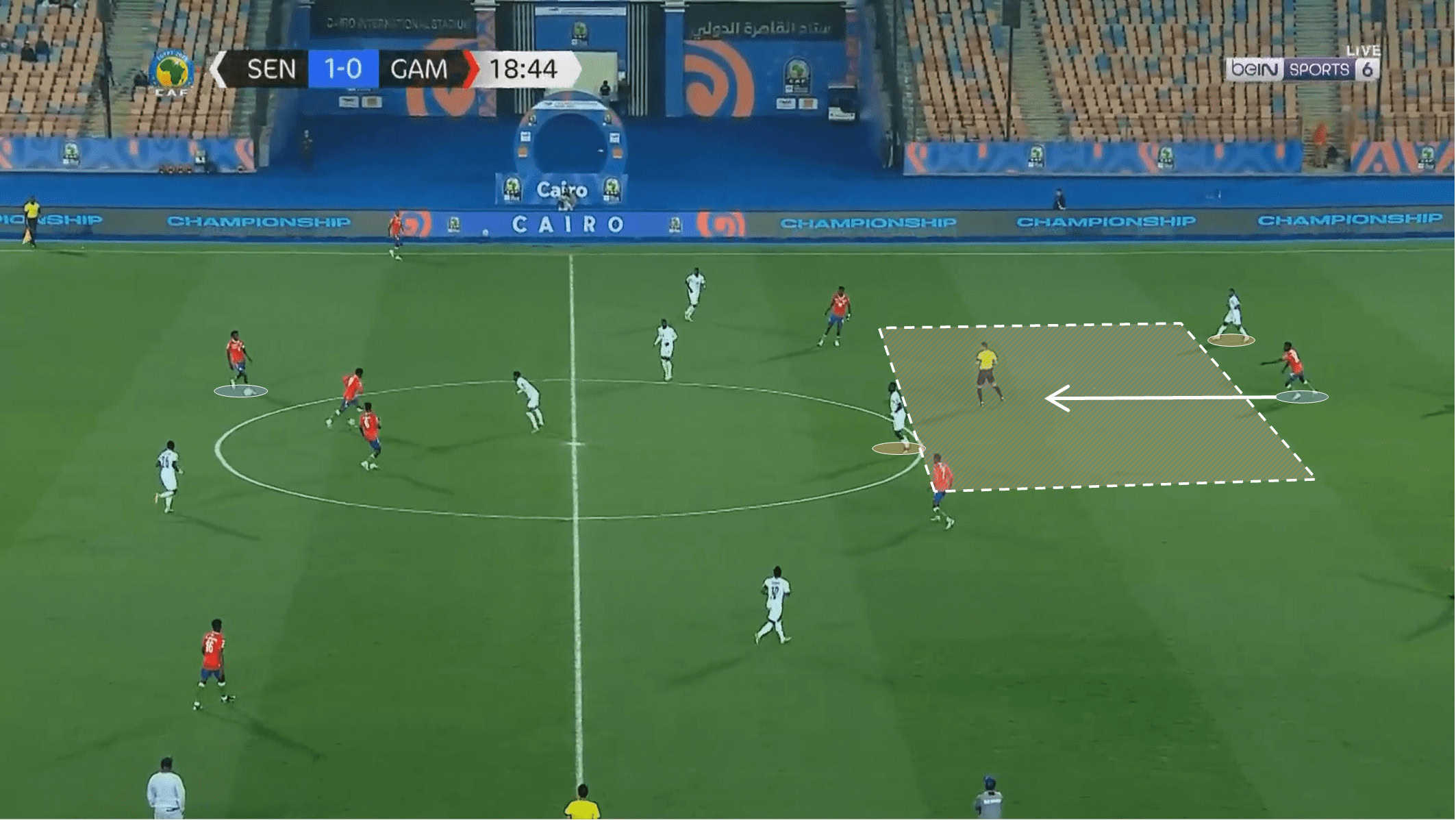
He is also strong in playing with his back turned to the defenders, where he often seeks one-touch combinations with his teammates. Although he lacks some physical strength, he has proven himself to be quite effective in handling the opposition’s marking.
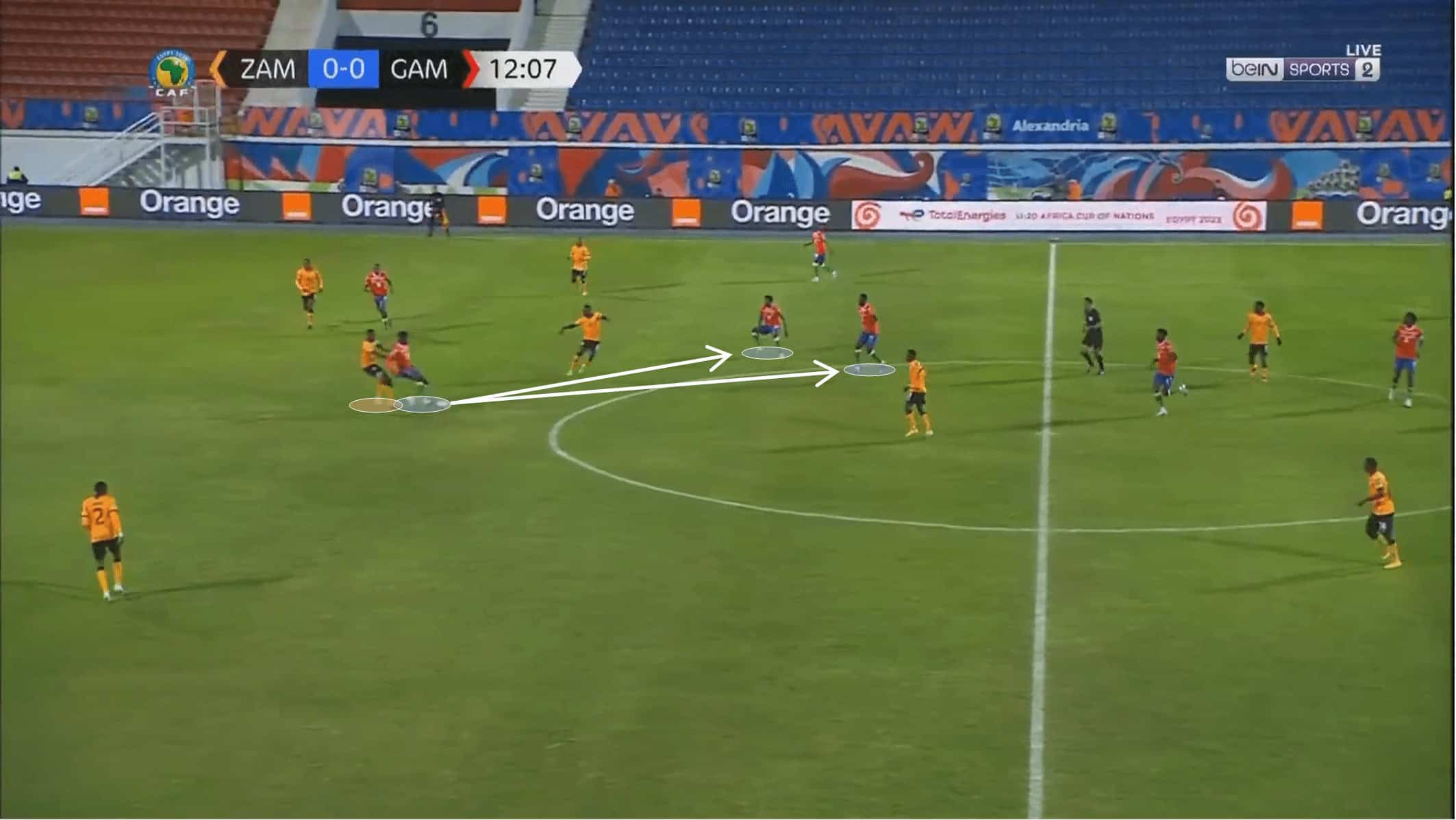
The 19-year-old Gambian adjusts his positioning in accordance with his teammates’ and can be observed, although less recurrent, playing on the flank. There, he has a similar behaviour as when he plays in the centre-forward position: combine and immediately seek the back of the defenders.
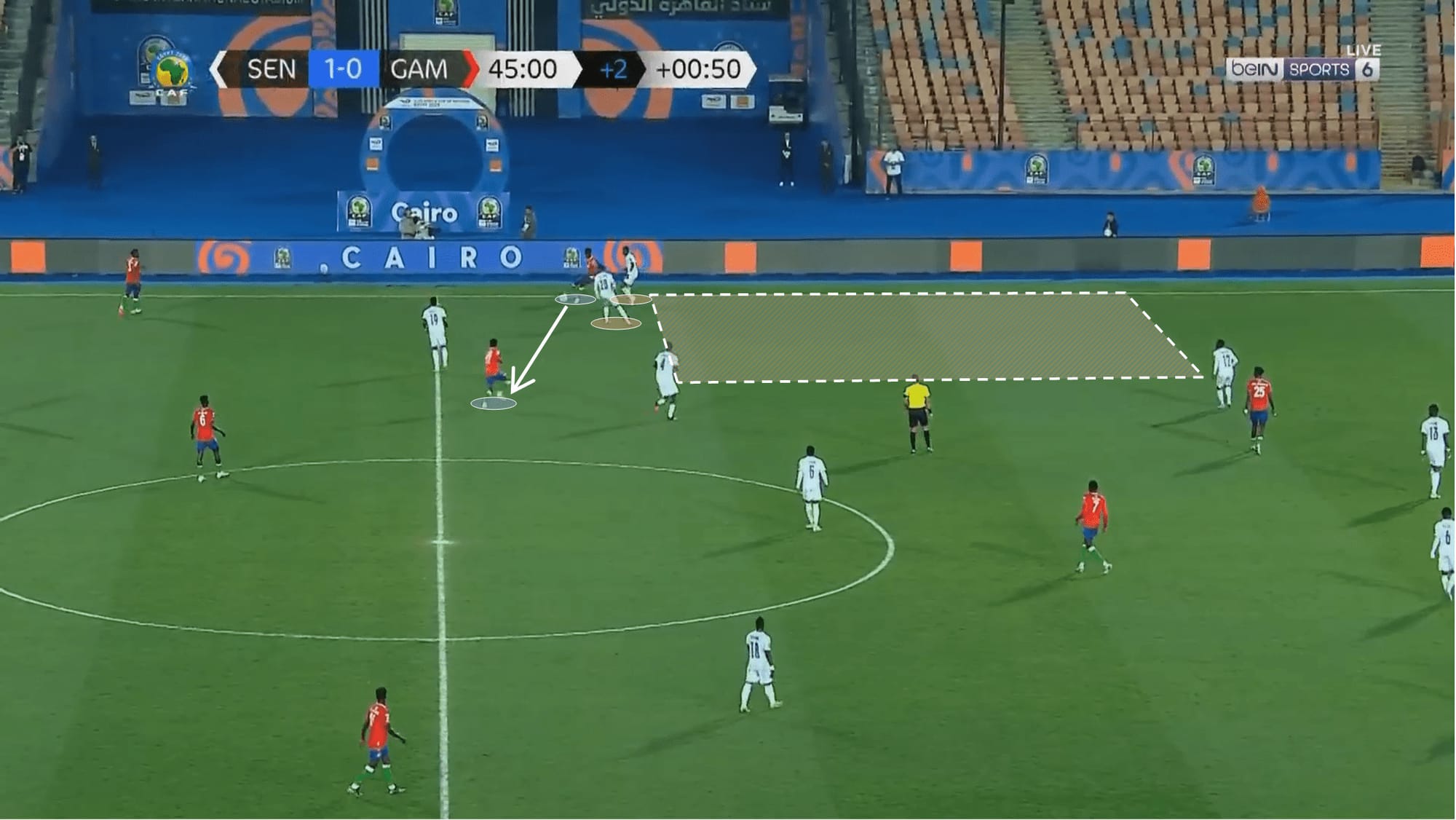
Here, we see him playing a lovely pass into the centre while marked by two Senegal players. Despite the special attention afforded to Bojang, he manages to find a way to release the ball into midfield before turning and exploding into the space behind.
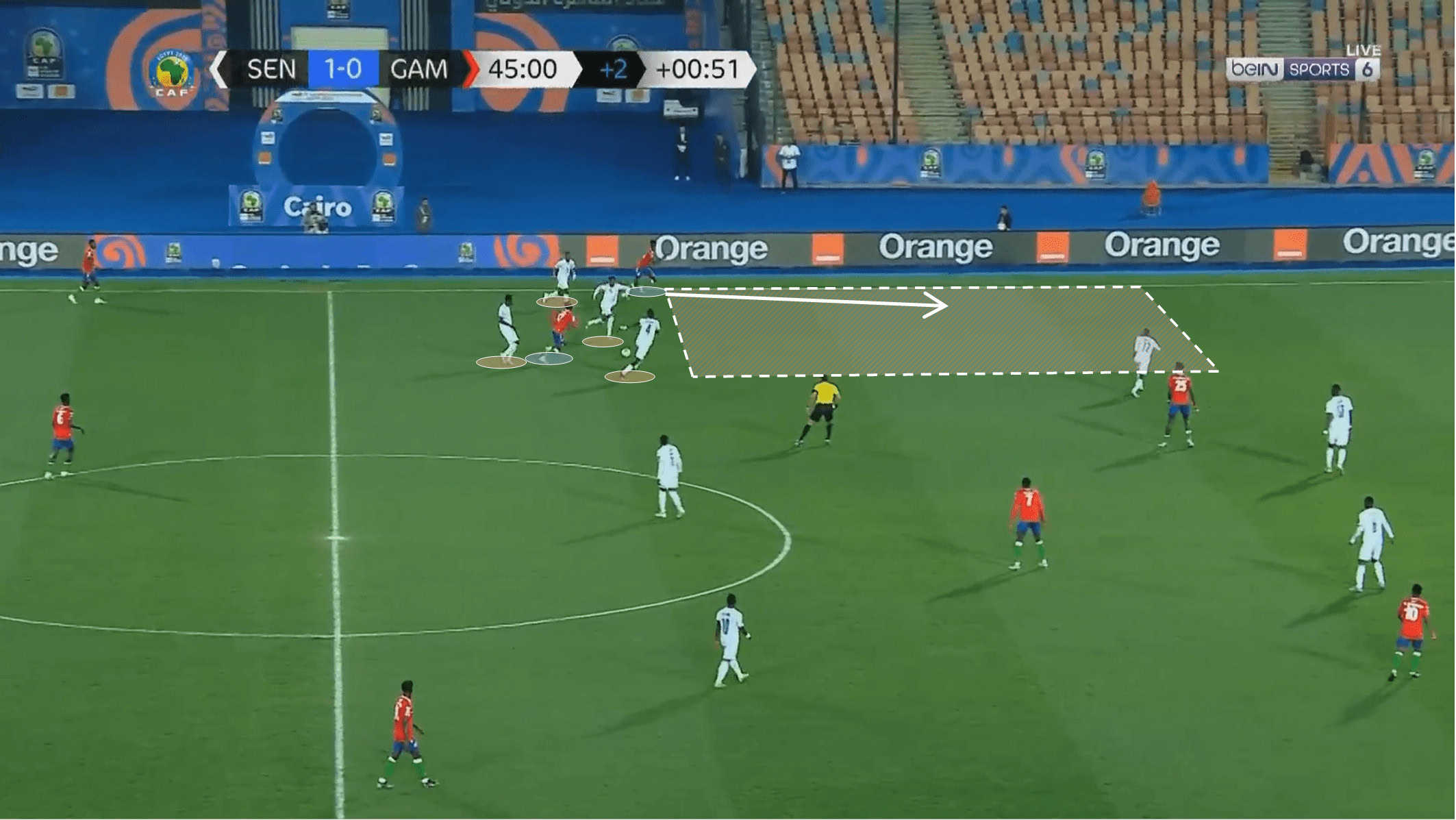
Even though Adama is a player characterised by his verticality, whenever in a lower position and turned to the opposition’s goal he can also be valuable making, key passes into the final third.
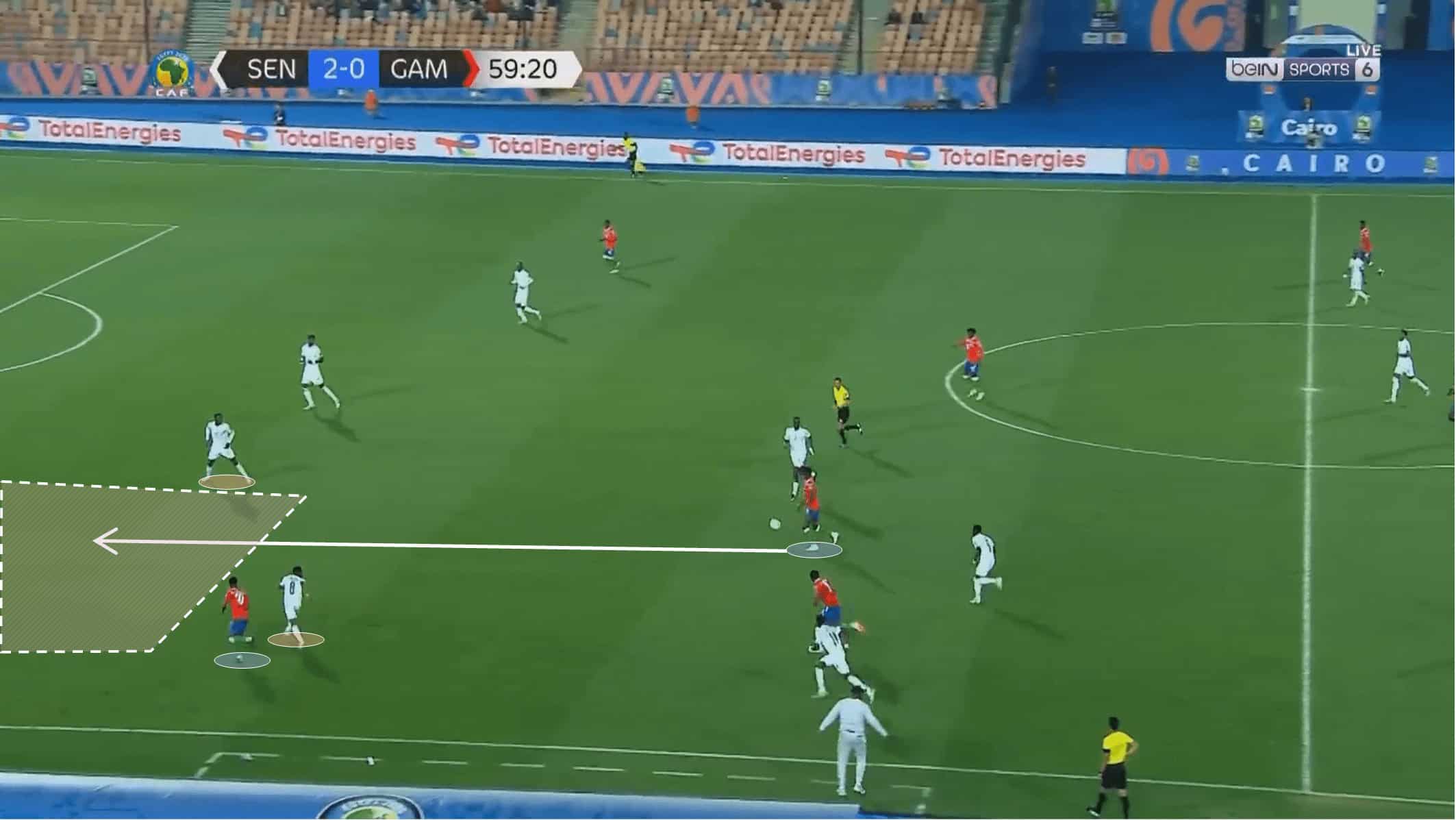
Further on the pitch, and to be more precise in crossing situations, Adama’s positioning is once again positive. In order to attack the correct spaces with the exact timing inside the box, a previous preparation is important to be made.
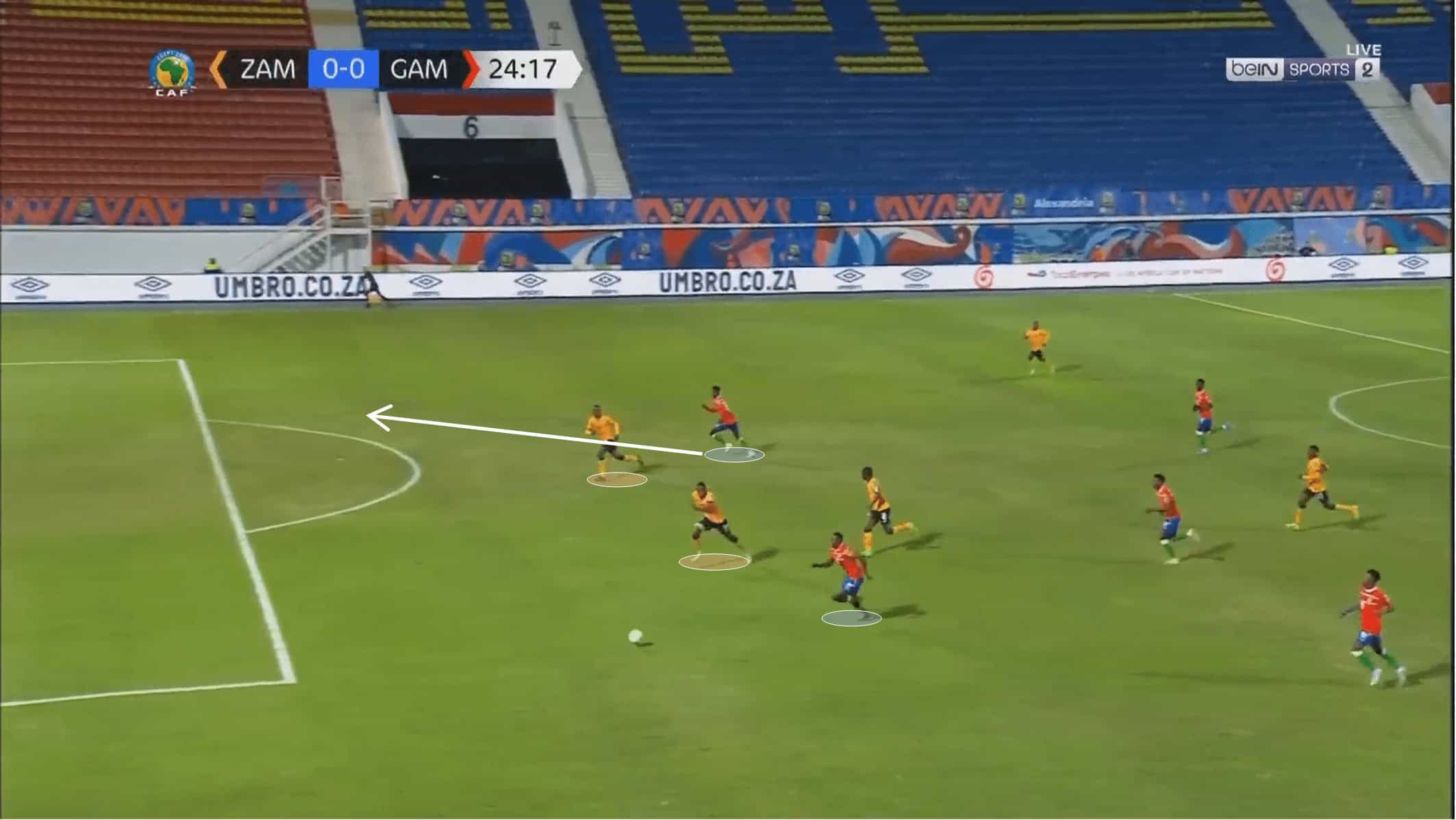
For example, we chose a recurrent situation where Bojang is already anticipating his positioning in the box before the ball carrier arrives at a crossing zone. As we can see below, he tends to seek the space on the defenders’ blind side, probably to misguide his marking and to make a more effective approximation from the far post into the penalty spot or near post.
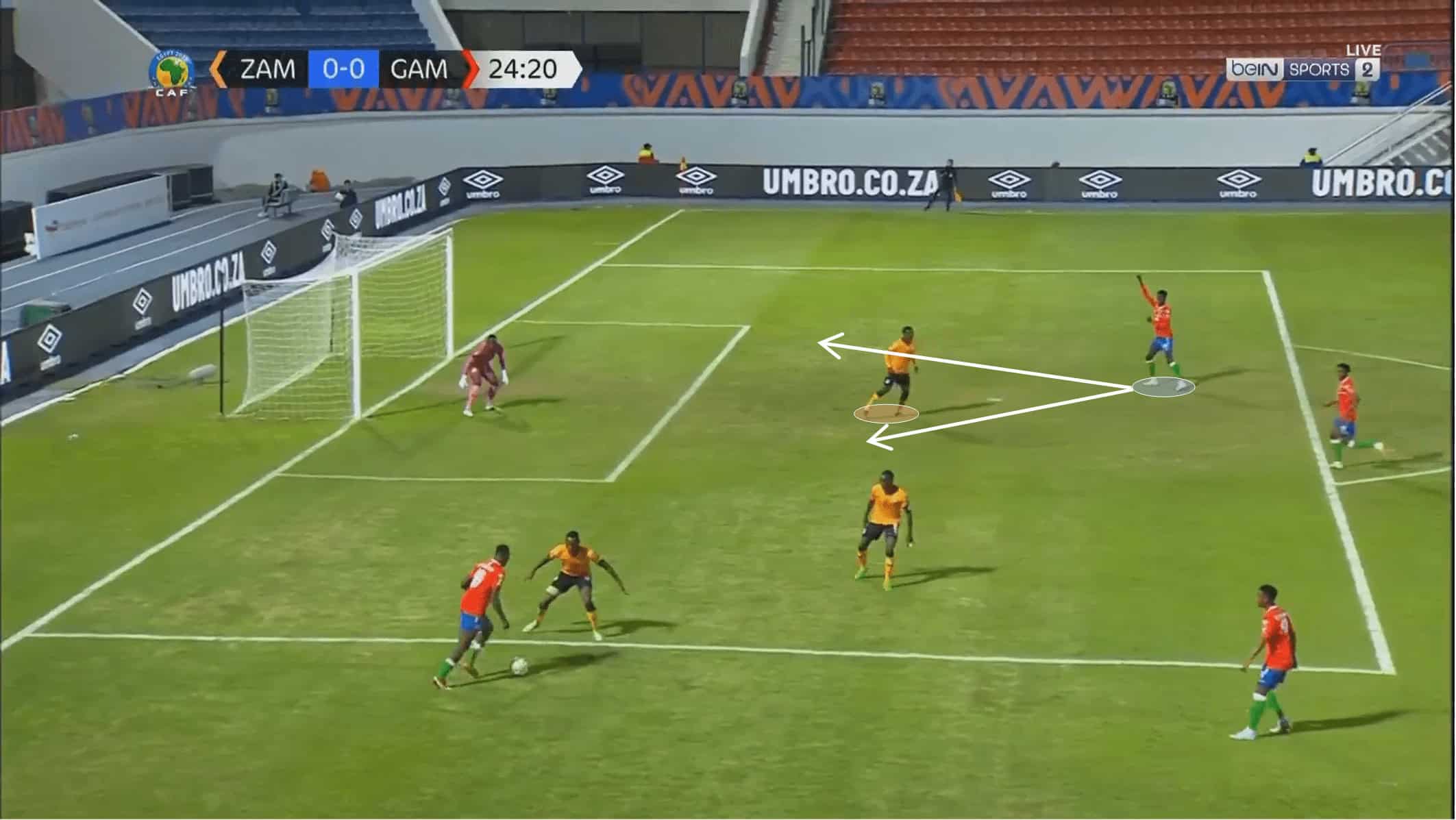
On the other hand, mostly due to his pace and positioning, the Gambian can also be dangerous in a counterattacking situation. Again, his placement on the field has high influence on his future actions, especially when his team is on a medium-low block without possession, Adama often stands high on the pitch.
Such behaviour can be interpreted as an instrument to potentiate his transition, where his teammates seek him mostly by through balls into the depth. With this being said, if he stood low, eventually, the counterattack would take more time to be made.
Behaviour out-of-possession
Out-of-possession, Adama shows commitment and a high work rate, being an important element on his team’s first defensive barrier.
Bojang often presses the two centre-backs plus the goalkeeper by himself as a pressing element in Gambia’s national team. Yet, he is capable of doing such pressing over the full 90 minutes with almost the same rhythm, which is a clear indicator of his winning mentality and dedication towards his team.
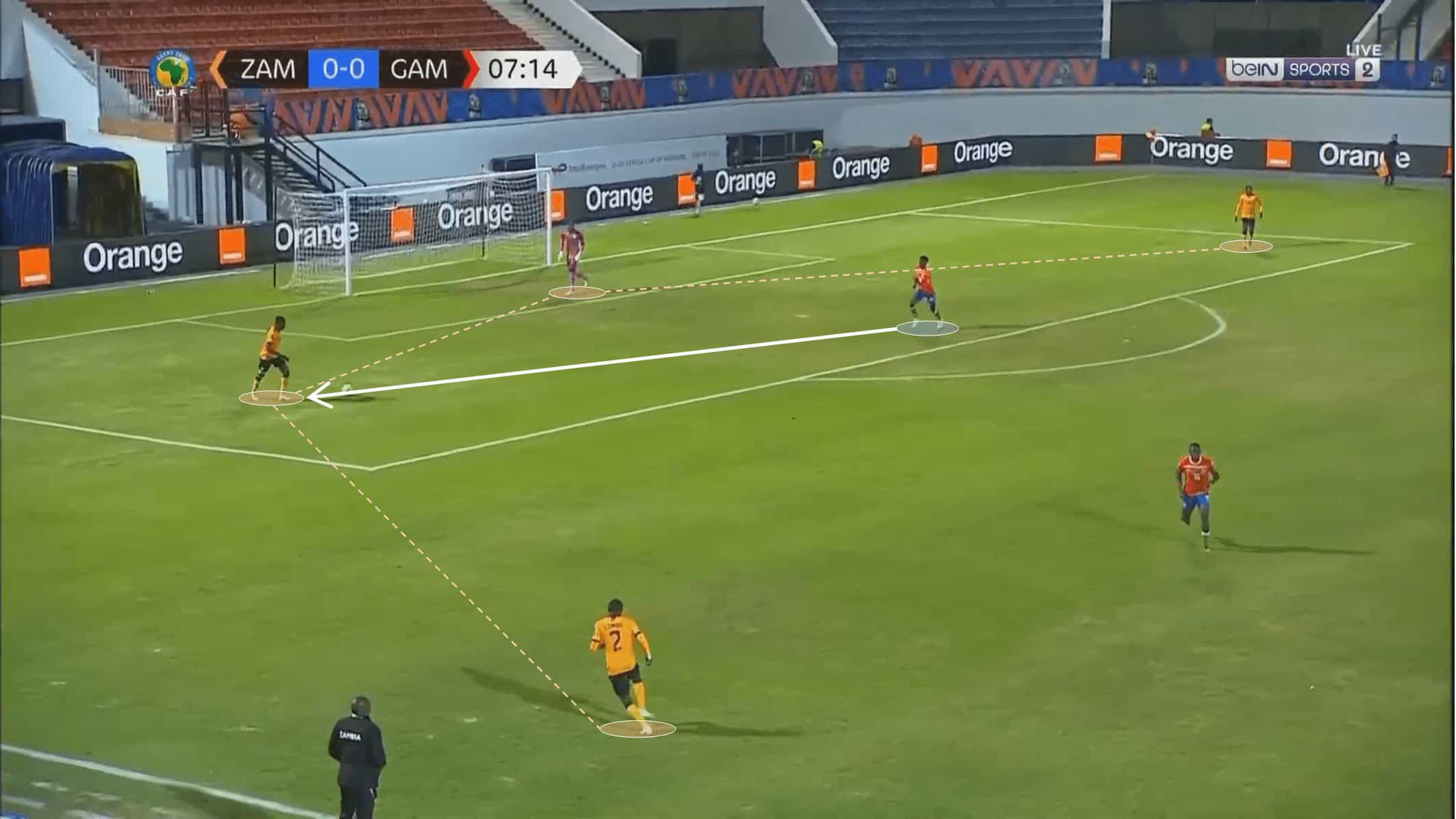
As we previously referenced, when opponents successfully pass over Gambia’s first defensive line, Bojang normally stays high on the pitch, looking for a potential counterattack. Yet, such a defensive strategy does not necessarily mean a neutral posture. In fact, during the U20 African Cup of Nations, Adama recovered the ball 17 times in just six games. The image below shares a precise example of such a defensive effort from the Gambian.
Adama Bojang is a promising young player that can make a difference for whatever team he ends up with, especially through some of his physical and mental attributes. He isn’t a very technically endowed player, but, as we all know, that does not totally define a centre forward’s quality. There are top strikers currently playing with top clubs in Europe with similar characteristics to Bojang, such as Bundesliga club Eintracht Frankfurt’s Randal Kolo Muani.
We also talked about the importance of his positioning and tactical knowledge in his offensive game, from a more initial phase in the build-up into a final one, right next to the opposition’s box. We also saw how his positioning could positively influence an eventual counterattack.
His high work rate and continuous effort during the game are not only a huge defensive plus for his team, who increase their odds to re-establish possession, but also can be offensively rewarding.
As a whole, Adama Bojang is an exciting attacking prospect who is expected to be transferred to a top European side this summer. How he’s going to fit in his potential new squad — only the future will tell; but with his type of mentality and tactical knowledge, I wouldn’t bet against his success.





Comments